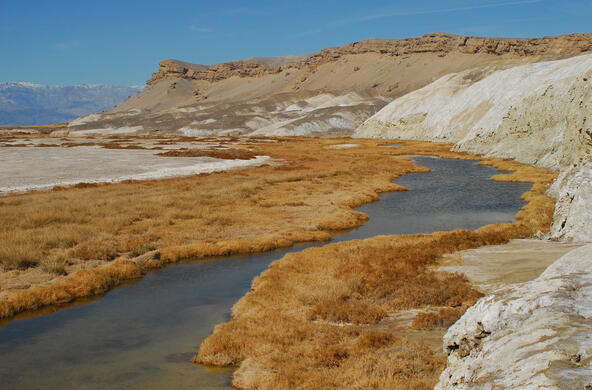The United States lacks the policies needed to ensure that cellulosic biofuel production will not cause environmental harm, says a distinguished group of international scientists. The paper, published in the journal Science, urges decision makers to adopt standards and incentives that will help ensure that future production efforts are sustainable, both energetically and environmentally.
Policymakers have the opportunity to implement science-based standards before large-scale crop production begins. Early preventative polices could play a major role in minimizing the unintentional side effects of large-scale crop production, such as fertilizer and pesticide pollution, soil erosion, invasive species spread, the fouling of waterways, and species loss.
Dr. Kathleen Weathers, an ecosystem scientist at the Cary Institute and one of the paper’s authors, comments, “Society is in a race to find renewable sources of carbon-neutral energy. Cellulose-based biofuels hold promise, but we need to proceed cautiously and with an eye toward minimizing long-term ecological impacts. Without a sound plan, we could wind up doing more environmental harm than good.”
Grain-based ethanol has served as a lesson in the perils of embracing energy solutions before their environmental effects are understood. Most of the commercial ethanol produced in the United States is made from corn. When large parts of the landscape are converted to resource-intensive, monoculture grain crops, as is the current model, the scientific consensus is that the environment suffers.
If cellulosic ethanol is to emerge as a feasible source of renewable energy, a vast amount of land will need to be used for its production. This land conversion, estimated to be as large as the amount of land in row-crops today, will change the face of the global landscape. Production standards and incentive programs could help minimize negative impacts and, in many cases, help farmers choose crops that provide valuable ecosystem services.
Weathers notes, “There is real potential for science to inform sustainable cellulosic crop strategies; it’s about picking the right plant, or plants, for a given landscape and managing crops in a minimally invasive way.” No-till farming can slow erosion and enrich soil; cover crops can sequester soil carbon and minimize nutrient run-off; and buffers can support beneficial insects such as pollinators.
But this won’t happen without making environmentally sustainable growing practices widely available and establishing incentives to farmers that adopt the techniques. The authors stress that as cellulosic biofuel technology improves, and efforts become commercialized, industry and legislators must adopt policies that reward sustainable crop production.
Twenty-three internationally-recognized scientists contributed to the paper. Weathers concludes, “I hope decision makers heed our recommendations. They emerged from a collaborative effort that cut across disciplines and ideologies, and we came to a strong scientific consensus.”







